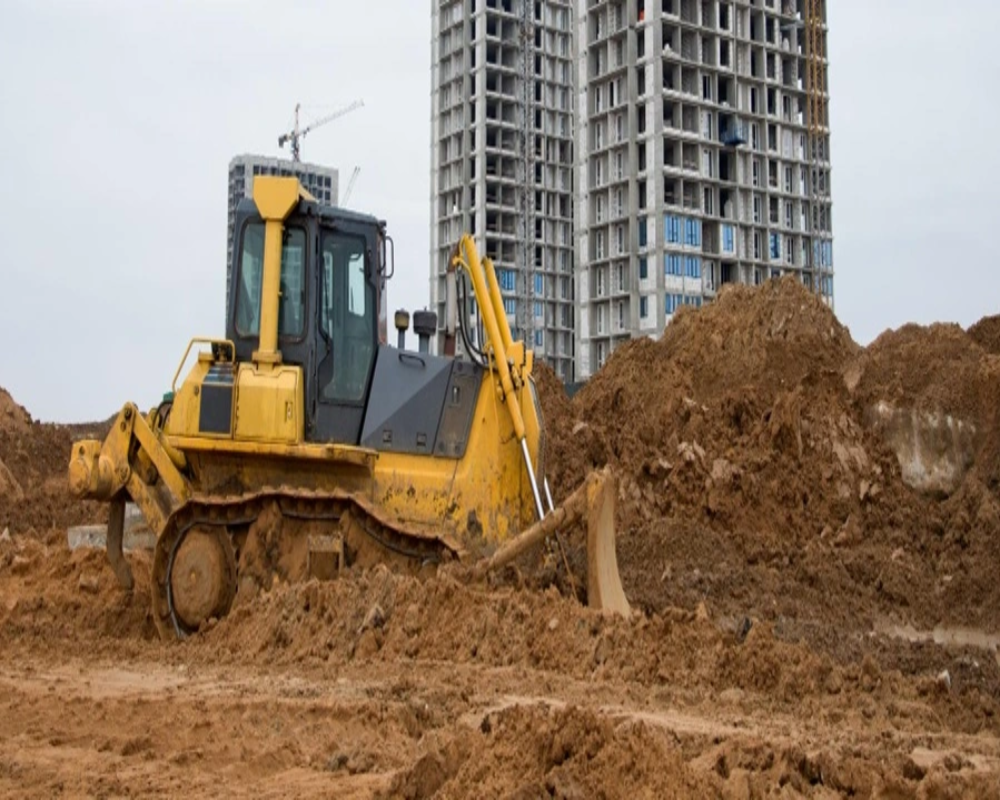Introduction
Land grading is a fundamental process in site preparation that involves leveling, sloping, and shaping the ground surface to create a stable and functional foundation for construction or development. In industrial, commercial, residential, and agricultural projects alike, land grading ensures proper drainage, structural integrity, and accessibility. It is one of the first steps undertaken in transforming raw, uneven, or unprepared land into a usable site. Without effective grading, projects are susceptible to water accumulation, soil erosion, and structural instability. This article explores the definition, purpose, techniques, and implications of land grading in the context of site development.
1. Definition of Land Grading
Land grading refers to the engineering process of adjusting the slope and contour of land to achieve a desired elevation or surface condition. It includes cutting (removing soil), filling (adding soil), and compacting to meet specific design specifications for construction or landscaping.
2. Purpose of Land Grading
The primary purpose of land grading is to create a flat or appropriately sloped base for construction, drainage, and surface stability. It supports infrastructure development, enhances site usability, and mitigates environmental and operational risks.
3. Role in Site Preparation
As a key phase of site preparation, grading follows land clearing and precedes excavation. It sets the stage for foundations, roads, buildings, and drainage systems, making it essential for project accuracy and safety.
4. Types of Land Grading
Common types of grading include rough grading (initial contour shaping), finish grading (final surface adjustment for construction), slope grading (creating inclines for runoff), and contour grading (naturalistic shaping for landscaping or erosion control).
5. Equipment Used in Grading
Grading typically involves the use of heavy machinery such as bulldozers, motor graders, excavators, backhoes, and compactors. GPS-guided equipment may also be used in large-scale or high-precision projects to achieve consistent elevation control.
6. Grading Plans and Design Standards
Before execution, a grading plan is prepared based on topographic surveys and engineering requirements. It outlines proposed elevations, slope directions, cut-and-fill calculations, and drainage patterns to ensure compliance with regulatory standards.
7. Drainage and Water Management
Proper grading prevents water accumulation and directs surface runoff away from buildings and structures. This reduces the risk of flooding, soil erosion, and water damage. Swales, berms, and gentle slopes are often integrated into the grading design.
8. Soil Stabilization and Compaction
Grading is followed by compaction to increase soil density and strength. This ensures that the ground can support structures and withstand environmental forces. In cases of weak soils, stabilization techniques such as lime or cement treatment may be used.
9. Erosion Control During Grading
To minimize environmental impact, erosion control measures such as silt fences, sediment basins, and cover vegetation are often implemented during grading activities. These practices prevent sediment runoff and protect nearby ecosystems.
10. Cut and Fill Balancing
Efficient grading involves balancing the volume of soil cut from high areas and the fill required for low areas. Proper balancing reduces the need to import or export soil, saving both time and cost during site development.
11. Grading for Roads and Paved Surfaces
In industrial and commercial projects, land grading is critical for constructing roads, parking areas, and loading docks. It ensures surface evenness, proper slope for drainage, and durability of paved surfaces.
12. Compliance with Zoning and Environmental Laws
Grading must comply with local zoning codes, slope regulations, and environmental guidelines. Permits are often required, especially for large-scale or environmentally sensitive sites. Non-compliance can lead to fines or construction delays.
13. Challenges in Grading
Common challenges include encountering hard rock, groundwater, contaminated soil, or unstable terrain. These require specialized equipment or alternative methods, often increasing project complexity and cost.
14. Cost Estimation in Grading
Grading costs depend on site size, soil condition, required elevation changes, and equipment usage. Accurate cost estimation requires thorough site analysis and grading plan development to avoid budget overruns.
15. Importance of Professional Supervision
Qualified civil engineers or geotechnical experts must supervise grading operations to ensure adherence to design specifications and safety standards. Professional oversight minimizes errors and ensures long-term site stability.
Conclusion
Land grading is an essential element of site preparation that directly influences the success, safety, and longevity of any development project. By reshaping the land to meet design and functional requirements, grading enables proper drainage, foundation integrity, and operational efficiency. It supports the construction of infrastructure, prevents environmental degradation, and ensures regulatory compliance. From small plots to large industrial zones, effective land grading lays the groundwork for development that is structurally sound, environmentally responsible, and economically viable. Planning and executing grading with precision is the first step toward building a solid foundation—both literally and strategically—for any project.
Hashtags
#LandGrading #SitePreparation #ConstructionSite #CivilEngineering #LandDevelopment #GradingServices #Excavation #SiteWork #EarthMoving #SoilStabilization #ConstructionManagement #SiteDesign #LandSurveying #BuildingSite #InfrastructureDevelopment #SiteClearing #GradingContractor #Landscaping #ProjectManagement


